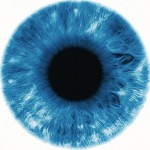
The NICE guideline on psychosis with coexisting substance misuse was published in 2011, which means it’s now nearly 3 years out of date. This is because guidelines take many months to produce, so by the time they are published the evidence in them is 1 year old at best.
Some NICE guidelines are supplemented by evidence summaries, which aim to update individuals, managers and commissioners with the latest evidence on a specific topic. A new evidence summary on psychosis with coexisting substance misuse was published last month and I’ve just picked it up via the excellent CHAIN Network.
Methods
The authors searched a wide range of databases and found 5 new research studies worth including (from an initial list of nearly 4,000), all of which had been published since May 2010.
Results
The expert advisory group working on this update decided that none of the key findings are significant enough to have any impact on the existing NICE guidance:
Secondary care mental health services
- Current evidence for choosing between atypical antipsychotic drugs in people who have psychosis with coexisting substance misuse has limitations and shows conflicting results
- Quetiapine in combination with lithium or valproate semisodium in people with bipolar I disorder with coexisting alcohol dependence does not seem to have any additive effect on manic or depressive symptoms or level of alcohol use
- Limited evidence suggests that a motivational intervention seems to reduce cannabis use in people with coexisting psychosis and cannabis misuse to a greater extent than usual care, but these differences may not be sustained over 12 months
Inpatient mental health services
- Limited evidence suggests a care coordination intervention including assertive outreach and peer support may be effective for increasing engagement with outpatient services after discharge from inpatient mental health services
Uncertainties
Three new treatment uncertainties were also generated from this update:
Secondary care mental health services
- Olanzapine for cannabis cravings or use in people with psychosis and coexisting substance misuse
- Risperidone for cannabis cravings or use in people with psychosis and coexisting substance misuse
Inpatient mental health services
Links
Psychosis with coexisting substance misuse (PDF). NICE Evidence Update 26, December 2012.
Psychosis with coexisting substance misuse: Assessment and management in adults and young people (PDF). NICE CG120, March 2011.
Machielsen M, Beduin AS, Dekker N et al. (2012) Differences in craving for cannabis between schizophrenia patients using risperidone, olanzapine or clozapine. Journal of Psychopharmacology 26: 189–95 [Abstract]
Sevy S, Robinson DG, Sunday S et al. Olanzapine vs. risperidone in patients with first-episode schizophrenia and a lifetime history of cannabis use disorders: 16 week clinical and substance use outcomes. Psychiatry research 188: 310–4
Stedman M, Pettinati HM, Brown ES et al. (2010) A double-blind, placebo-controlled study with quetiapine as adjunct therapy with lithium or divalproex in bipolar I patients with coexisting alcohol dependence. Alcoholism: Clinical and Experimental Research 34: 1822–31 [Abstract]
Bonsack C, Manetti SG, Favrod J et al. (2011) Motivational intervention to reduce cannabis use in young people with psychosis: a randomized controlled trial. Psychotherapy and Psychosomatics 80: 287–97 [Abstract]
Smelson D, Kalman D, Losonczy MF et al. (2012) A brief treatment engagement intervention for individuals with co-occurring mental illness and substance use disorders: results of a randomized clinical trial. Community Mental Health Journal 48: 127–32 [Abstract]
